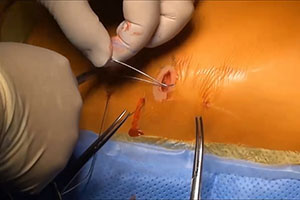The sandwich technique for repair of pectus carinatum and excavatum/carinatum complex
Abstract
Background: Simple external compression of pectus carinatum seems to have its limitations, particularly the repair of asymmetric pectus carinatum or excavatum/carinatum complex. We devised the sandwich technique (press-molding) to remodel the entire chest wall. The purpose of this study is to introduce the sandwich technique and appraise the early results.
Methods: Between January 2007 and January 2016, 523 consecutive patients with pectus carinatum and its variants were analyzed retrospectively. No patients were excluded during the study period. The sandwich 1 and 2 techniques using the internal and external pectus bars were for pectus carinatum repair. Modified techniques using the external string and the internal bar were to treat the lower costal flare (the flare-buster) and focal protuberances (the magic string) in pectus excavatum repair. Statistical analyses were carried out using paired and unpaired t-test or Wilcoxon signed rank tests.
Results: The sandwich repair with the external and internal bars was applied to 58 pectus carinatum patients: seven symmetric (12.1%), 14 asymmetric (24.1%), and 37 carinatum-excavatum complex (63.8%). After pectus excavatum repair, 426 patients had the flare-buster and 39 patients received the magic string. The sandwich 1 technique achieved near-complete resolution of carinatum in 52 patients (86.2%). The sandwich 2 technique accomplished almost symmetric configuration with no residual carinatum in all six cases.
Conclusions: The sandwich technique using the external and internal bars seems to be effective in treating asymmetric pectus carinatum and complex excavatum/carinatum deformities. The flare-buster and the magic string effectively relieve the costal flare and focal protuberances in pectus excavatum repair.
Cover






